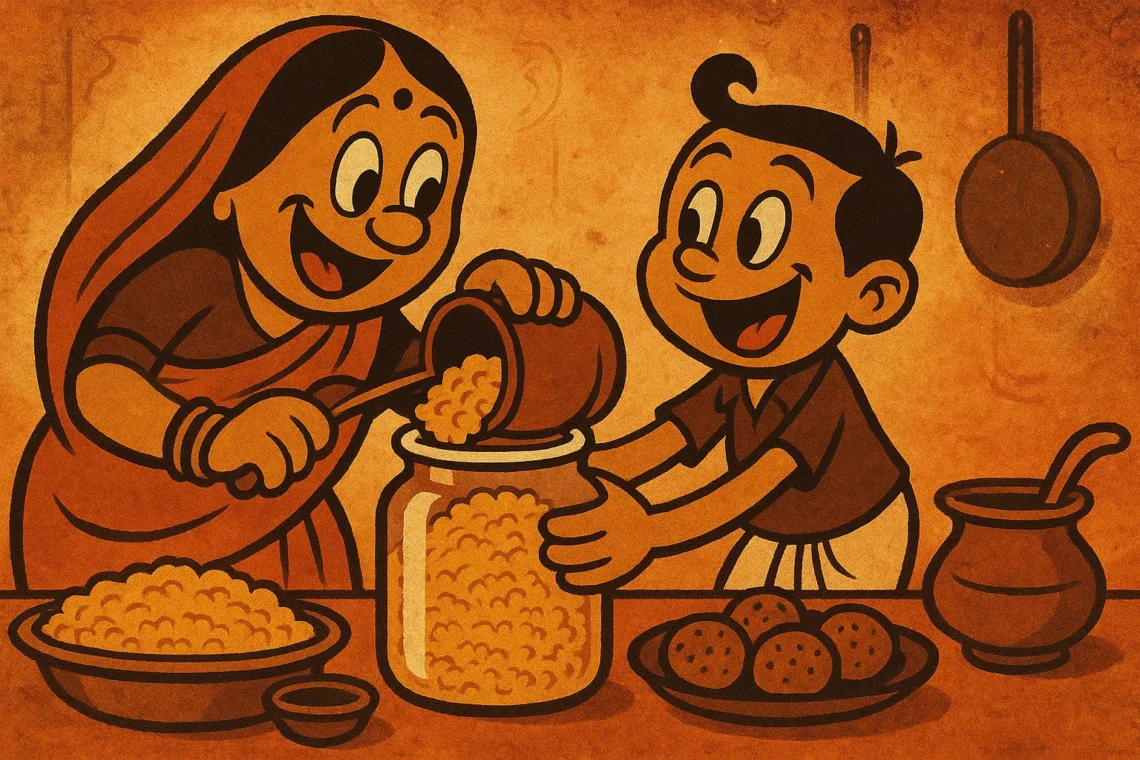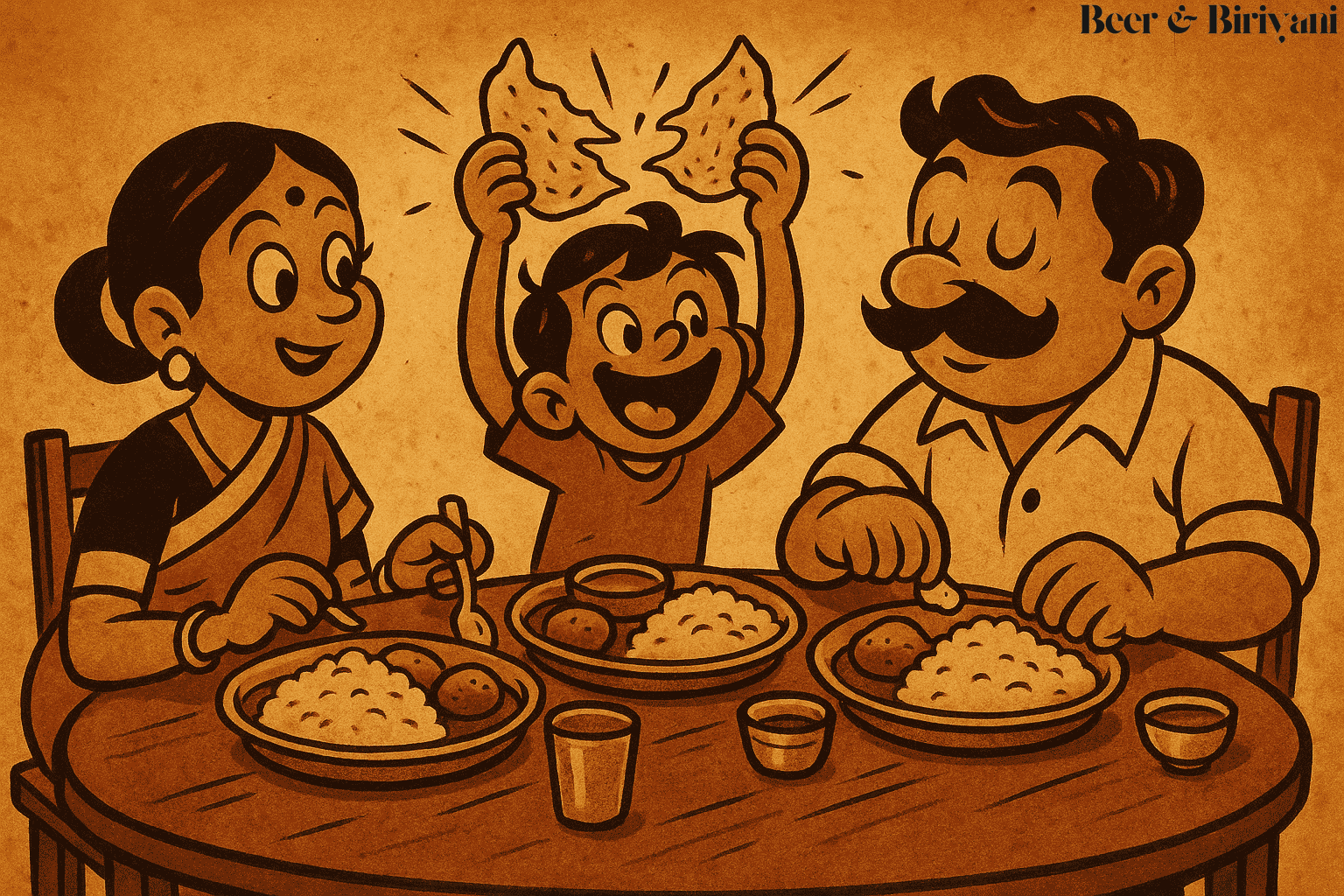There was a jar in our kitchen that, somehow, was never empty. It wasn’t the biggest jar or the most decorative — just a simple glass one with a faded lid, a little chipped at the rim, and a crack that had stopped spreading years ago, like it knew its limits. It sat on the kitchen counter, slightly sticky to the touch, and forever full of something — roasted chana, banana chips, jeera biscuits, namak paras, or sometimes even just plain marie golds. But no matter how often we reached into it, there was always something inside. Or so it felt.
We didn’t talk about the jar. It wasn’t sacred, like the pickle jar, or seasonal, like the sweet tin. It was just… there. Part of the landscape. You opened it when you were bored. When you were peckish. When the tea was five minutes away or the guests hadn’t yet arrived. You never asked what was in it. You just opened the lid, peeked, and pulled out whatever the day had assigned it.
The Quiet Acts of Care
Only later did I realize that someone was always refilling it. Quietly. Invisibly. Without announcement. Usually my mother, occasionally my grandmother, and sometimes — as I got older — me. We never said, “Oh, the jar’s empty, better fill it.” It just happened. Like magic that relied on consistency rather than spells.
Refilling that jar was never a chore. It was more like a gentle ritual. You’d buy something on the way home — a packet of masala peanuts, a roll of nankhatai, a handful of sugar-coated saunf — and pour it in, without fanfare. The jar didn’t ask for attention, only intention. It was the kitchen’s way of saying, “There’s always something here for you.”
The Snacks That Felt Like Safety
What that jar held changed with the seasons and the mood of the house. In winter, it was likely gajak or sesame chikki, snapped into uneven shards. During school exam months, it held glucose biscuits — dry and unsatisfying, yet comforting in their blandness. In the monsoon, it was tightly packed with bhujia or ribbon murukku, sealed fast to protect against humidity.
Sometimes it was full of things nobody really wanted — stale rusk, sad leftover farsan — but even then, its presence felt reassuring. Because the jar wasn’t about indulgence. It was about consistency. It was the edible version of a hug that never made a big deal about itself.
What It Means to Keep It Full
I never thought I’d miss a glass container until I moved out. My first apartment in Austin had no snack jar. Snacks lived in ziplock bags or crumpled grocery store packaging. I tried replicating it — bought a fancy jar from IKEA, filled it with trail mix. It didn’t work. It didn’t have history. It didn’t have rhythm.
But slowly, I learned. I started buying banana chips from the Indian store, some homemade shakkarpara from a friend’s mom, even just roasted almonds on sale. And I kept them in the jar. Not because I was hungry — but because someday, someone else might be. Or because, more often than not, I needed to remind myself that care lives in small acts.
The Jar Is a Promise
Refilling the jar, even when no one asks, is an act of quiet love. Of making space for rest, for nibbling, for small comforts in between big decisions. It’s the food equivalent of saying, “You don’t have to ask. I’ve already thought of you.”
And when I visit home now, that jar is still there. Still not empty. Still waiting for someone to absentmindedly open it, grab something crunchy, and carry on. And someone — probably my mom — still refills it without a word.
Because that’s what the jar is. Not just storage, not just snacks. It’s a promise. One that says: there will always be enough. There will always be something. Even when everything else feels like it’s running out — this jar will not.
Born in Mumbai, now stir-frying feelings in Texas. Writes about food, memory, and the messy magic in between — mostly to stay hungry, sometimes just to stay sane.












